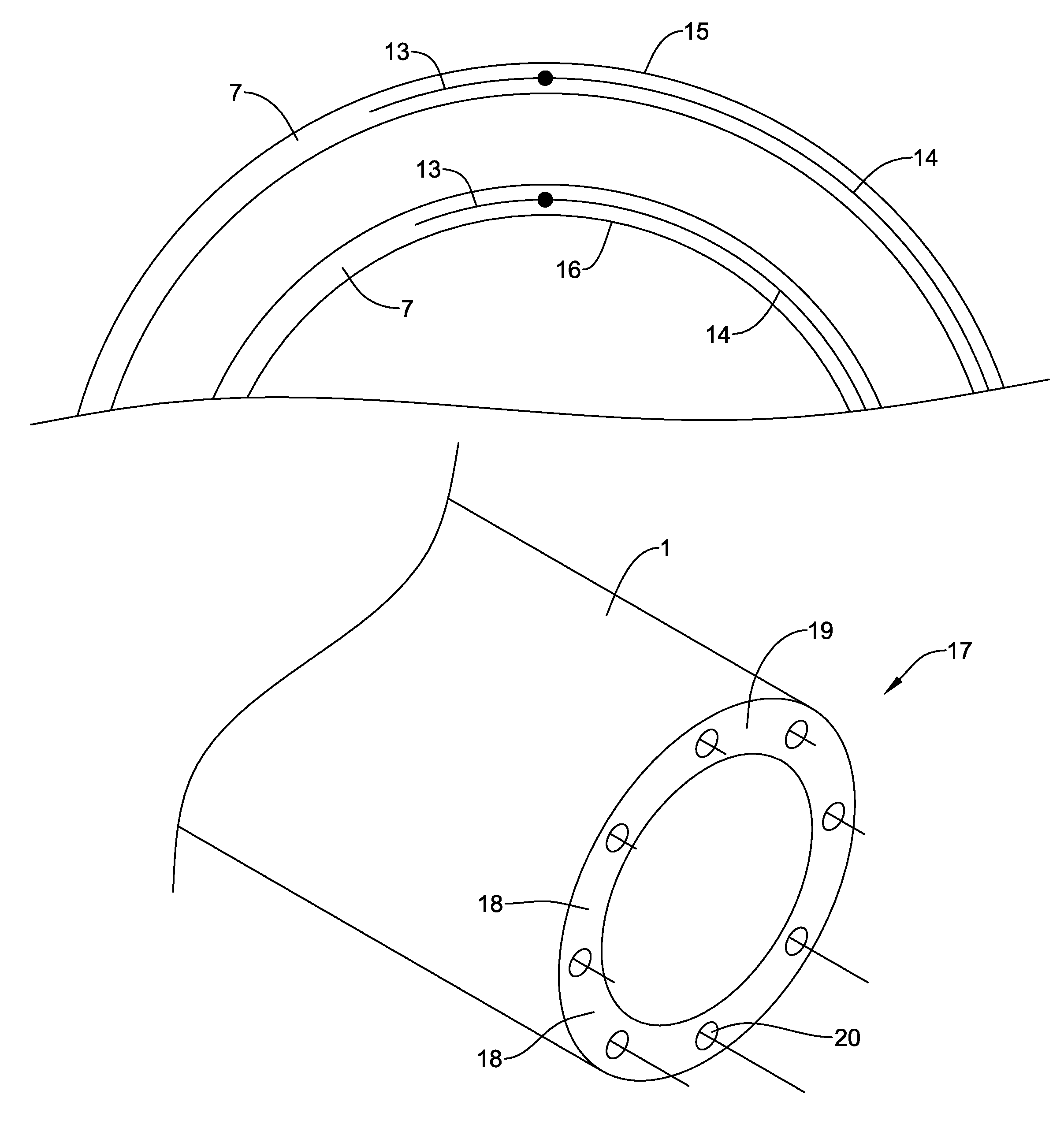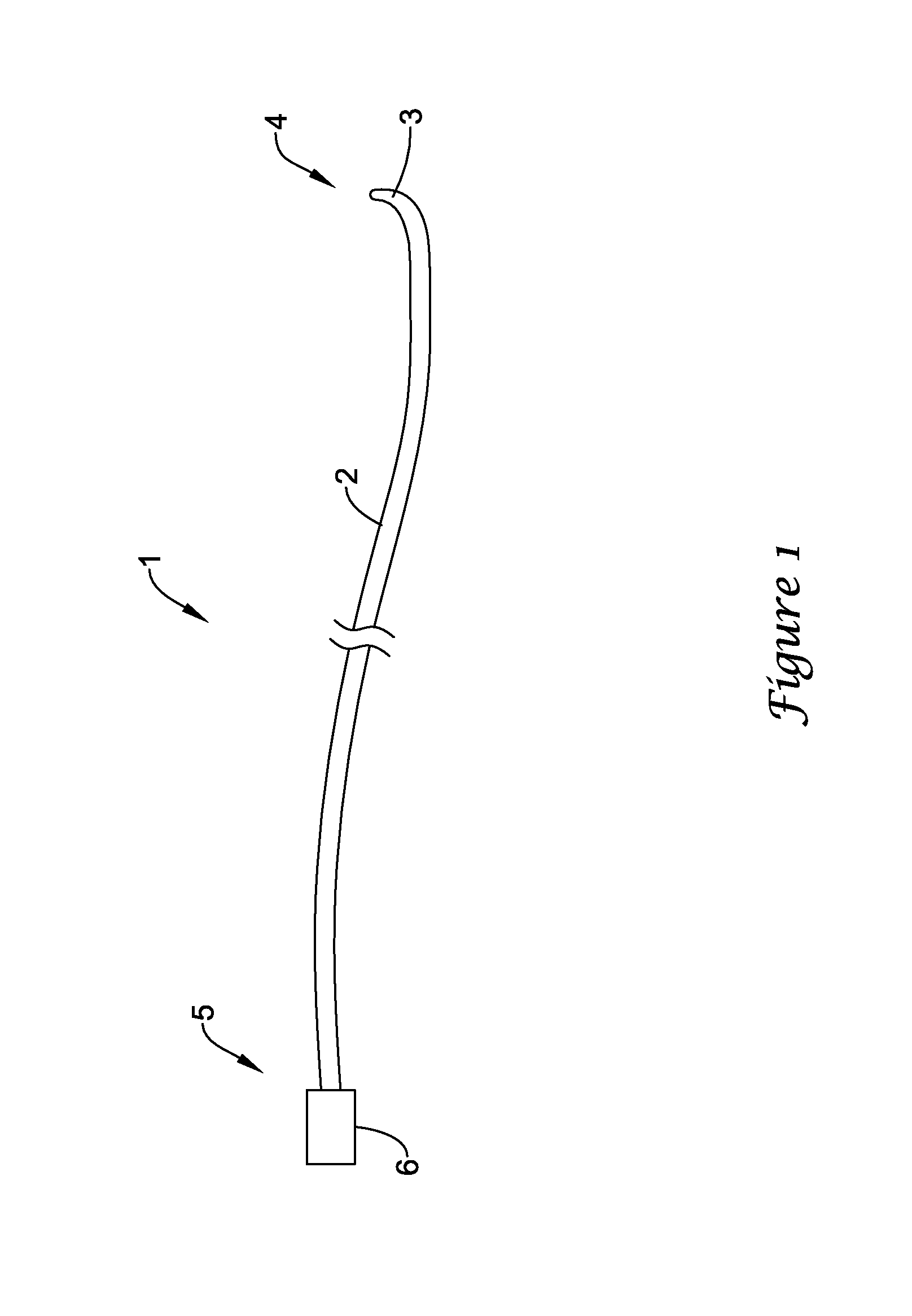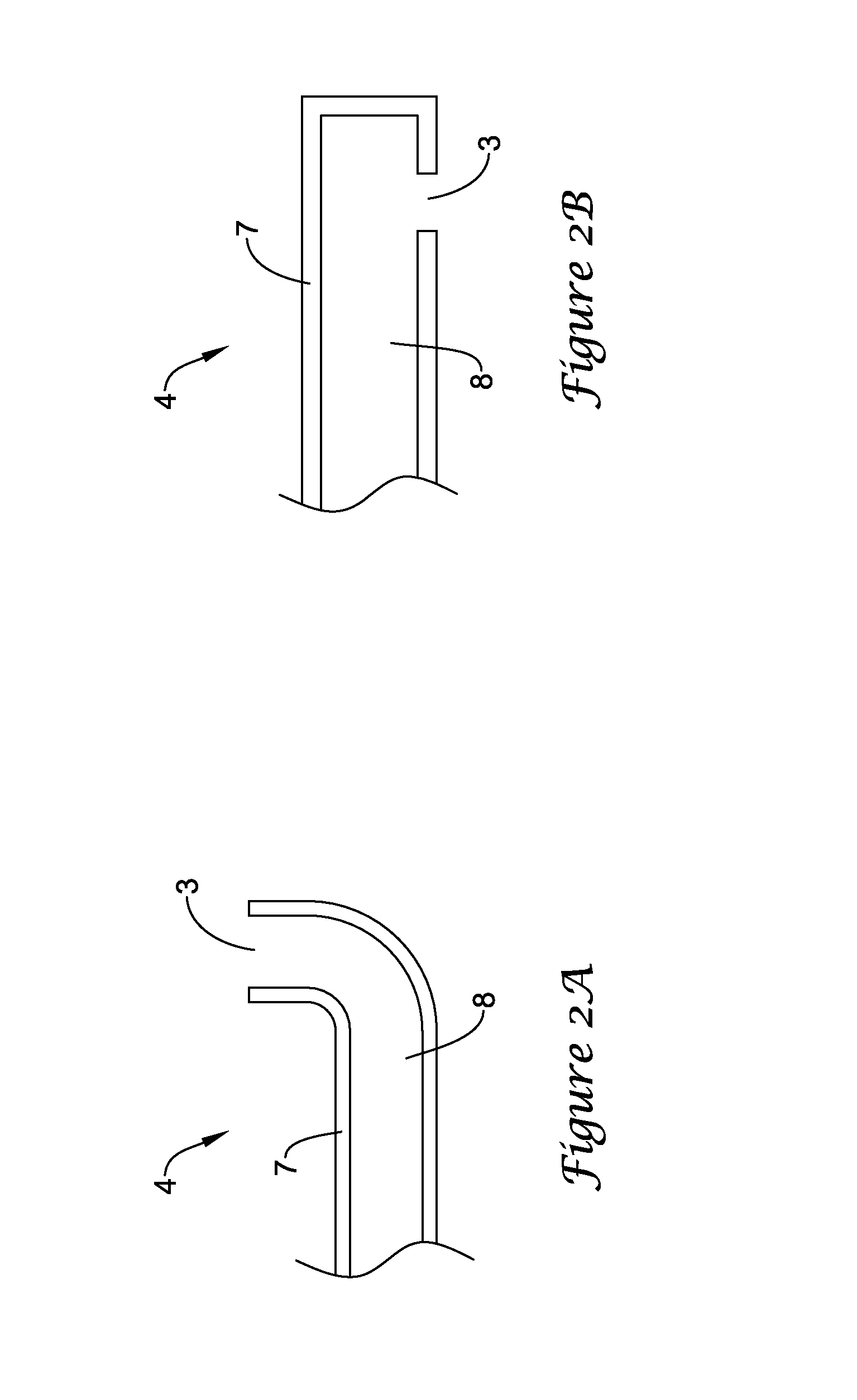Medical device guidance from an anatomical reference
a medical device and anatomical reference technology, applied in the field of medical device deployment and use guidance, can solve the problems of increasing the complication, time and expense of a medical procedure, advanced to the point of regular clinical use or undefeated add cost, and large, bulky equipment and/or additional imaging set-up and use time to the overall procedure, so as to reduce the cost, reduce the time and cost, and ensure the effect of accuracy
- Summary
- Abstract
- Description
- Claims
- Application Information
AI Technical Summary
Benefits of technology
Problems solved by technology
Method used
Image
Examples
Embodiment Construction
[0021]FIG. 1 illustrates a catheter 1 in accordance with an embodiment of the present invention. Catheter 1 comprises a tube 2 forming a lumen 8 therein (shown in FIG. 2), with a distal orifice 3 formed at a distal end 4 of catheter 1. At a proximal end 5 of catheter 1 are fittings for use of the catheter, illustrated schematically by terminal box 6, including, for example, means for guiding and manipulating the catheter toward a target site, provisions for passage of fluids and / or other medical devices through lumen 8 to a target site via distal orifice 3, and connections for reading instrumentation contained on or within catheter 1. Catheter 1 may be formed from materials and processes well known in the catheter manufacture art.
[0022]FIG. 2a illustrates the configuration of distal end 4 in the present embodiment. FIG. 2a is a longitudinal cross-section view of catheter 1 showing tube wall 7 and the lumen 8 formed therein. Catheter 1 may alternatively include multiple lumens; howev...
PUM
 Login to View More
Login to View More Abstract
Description
Claims
Application Information
 Login to View More
Login to View More - R&D
- Intellectual Property
- Life Sciences
- Materials
- Tech Scout
- Unparalleled Data Quality
- Higher Quality Content
- 60% Fewer Hallucinations
Browse by: Latest US Patents, China's latest patents, Technical Efficacy Thesaurus, Application Domain, Technology Topic, Popular Technical Reports.
© 2025 PatSnap. All rights reserved.Legal|Privacy policy|Modern Slavery Act Transparency Statement|Sitemap|About US| Contact US: help@patsnap.com



